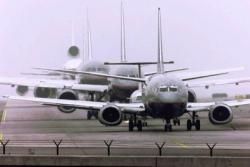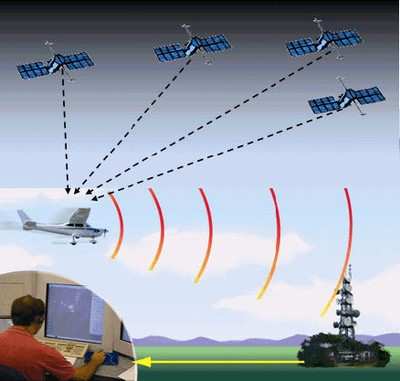Fri, Mar 13, 2009
System Will Address Capacity At Nation's Busiest Airports
 Raytheon was recently awarded a
contract to develop the NextGen Terminal Data Distribution System,
which will make more efficient use of the crowded airspace in the
US. The contract was awarded by the US Department of
Transportation's Volpe National Transportation Systems Center, part
of the Research and Innovative Technology Administration. The Volpe
Center provides key support to the Federal Aviation Administration
on NextGen.
Raytheon was recently awarded a
contract to develop the NextGen Terminal Data Distribution System,
which will make more efficient use of the crowded airspace in the
US. The contract was awarded by the US Department of
Transportation's Volpe National Transportation Systems Center, part
of the Research and Innovative Technology Administration. The Volpe
Center provides key support to the Federal Aviation Administration
on NextGen.
The TDDS will automate flight information, resulting in improved
capacity in the nation's airspace. It will facilitate the exchange
of net-enabled data between disparate systems and integrate
multiple data sources to better manage the airspace. It will be the
first-of-its-kind terminal system applied in the FAA's System Wide
Information Management program.
The SWIM program will enable increased common situational
awareness and improve the National Airspace Systems' ability to
deliver the right information to the right place at the right
time.
"Raytheon is continuing to lead and support NextGen with
innovative solutions," said Andy Zogg, Raytheon Network Centric
Systems vice president of Airspace Management and Homeland
Security. "We see TDDS as an important first step in helping
address the capacity issues in our nation's airspace."
TDDS will facilitate the exchange of NAS flight data with
multiple existing systems, allowing them to better manage in-flight
and airport traffic flow.
As aircraft fly through airspace, they pass through different
tracking systems. The tracking systems transmit data and
communicate with each other using point-to-point interfaces, each
with a unique communication link and special purpose protocol. This
makes adding new interfaces and capabilities costly and
time-consuming.
The SWIM program requires cost-effective deployment of new
capabilities to manage airspace more effectively and efficiently.
TDDS will replace the point-to-point interfaces with
SWIM-compliant, service-oriented architecture.

The team, led by Raytheon's Network Centric Systems, includes
Lockheed Martin's Transportation and Security Solutions Division,
Intelligent Automation and Dnutch Associates.
More News
From 2023 (YouTube Version): Legacy of a Titan Robert (Bob) Anderson Hoover was a fighter pilot, test pilot, flight instructor, and air show superstar. More so, Bob Hoover was an i>[...]
Get The Latest in Aviation News NOW on Instagram Are you on Instagram yet? It's been around for a few years, quietly picking up traction mostly thanks to everybody's new obsession >[...]
Aero Linx: B-52H Stratofortress The B-52H Stratofortress is a long-range, heavy bomber that can perform a variety of missions. The bomber is capable of flying at high subsonic spee>[...]
Altimeter Setting The barometric pressure reading used to adjust a pressure altimeter for variations in existing atmospheric pressure or to the standard altimeter setting (29.92).>[...]
"Knowing that we play an active part in bettering people's lives is extremely rewarding. My team and I are very thankful for the opportunity to be here and to help in any way we ca>[...]
 Classic Aero-TV: Remembering Bob Hoover
Classic Aero-TV: Remembering Bob Hoover ANN FAQ: Follow Us On Instagram!
ANN FAQ: Follow Us On Instagram! ANN's Daily Aero-Linx (05.15.24)
ANN's Daily Aero-Linx (05.15.24) ANN's Daily Aero-Term (05.15.24):Altimeter Setting
ANN's Daily Aero-Term (05.15.24):Altimeter Setting Aero-News: Quote of the Day (05.16.24)
Aero-News: Quote of the Day (05.16.24)




